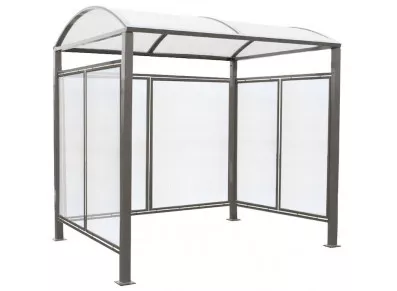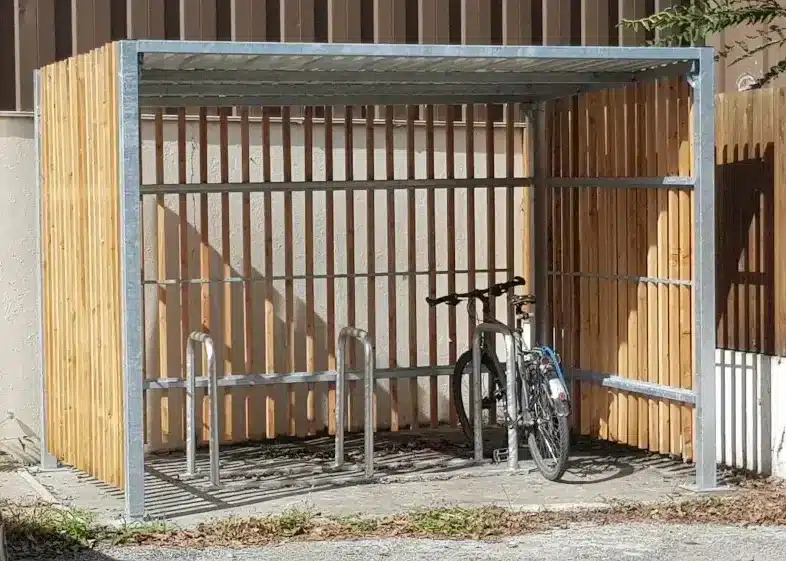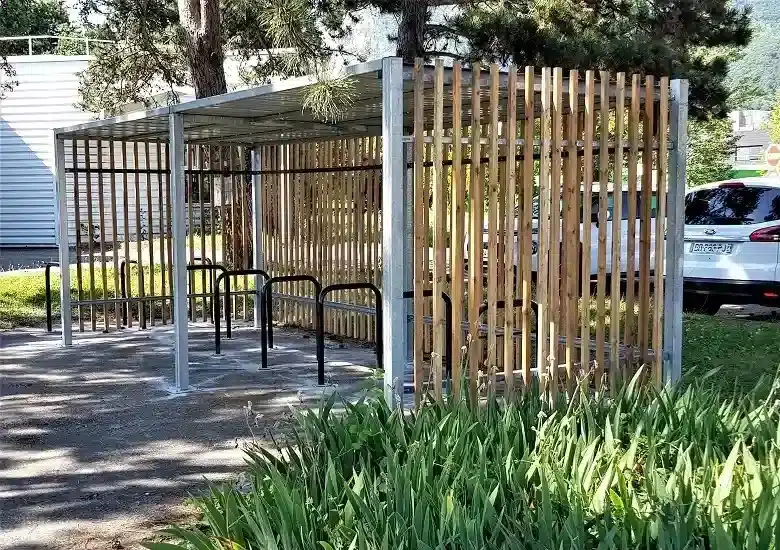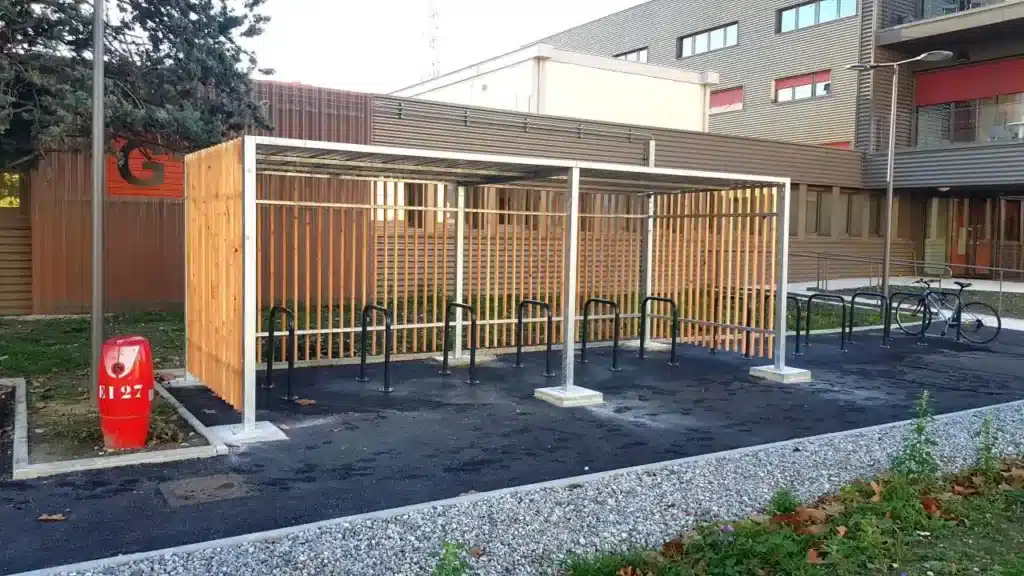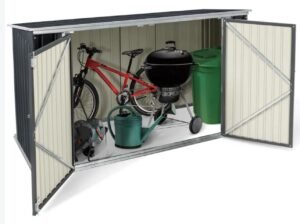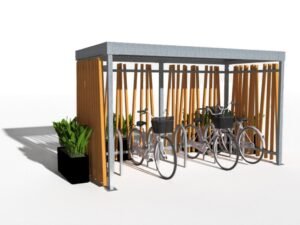Introduction
In a world that values sustainable mobility, bicycles are an environmentally-friendly way to get around. An outdoor bike shelter, offering secure storage and protection from the elements and theft, is essential to make the most of it. This article guides you through the different types of bike shelters, our top selection, and tips for choosing and installing your shelter. Ready to enhance your cycling experience with an outdoor bike shelter? Let's get started!
Plexiglass bike shelter
Polycarbonate bike shelters are ideal if you're looking for an affordable collective bike shelter. However, because of their panels, they are less resistant to weather conditions such as hail or strong winds.
Outdoor wooden bike shelter
For us, wooden bike shelters are the best choice. In addition to their modern aesthetics, they're also the most durable. With their galvanized steel structures, wood cladding and steel panelling, they'll stand up to the elements.
Safe bike shelter
Bicycle sheds are the ideal way for private individuals to secure their family's bicycles. Extremely economical in terms of space and cost, they are an excellent choice for single-family homes.
How to choose the best outdoor bike shelter?
Choosing the right outdoor bike shelter depends on a number of factors, including your specific needs, available space, budget and aesthetic preferences. Here are a few tips to help you make the best choice:
1. Determine your needs : How many bikes do you need to store? Do you need extra storage space for bike accessories? Answering these questions can help you determine the size and type of shelter you need.
2. Consider available space: Be sure to measure the space where you plan to install the bike shelter. This will help you choose the right size.
3. Choose the right material: As we mentioned earlier, outdoor bike shelters can be made from a variety of materials, each with its own advantages and disadvantages. Choose a material that meets your needs in terms of durability, maintenance and aesthetics.
4. Think safety: If you plan to leave your bike in the shelter for long periods, it may be wise to choose a shelter with additional security options, such as a lock.
5. Consider your budget: Outdoor bike shelters can vary considerably in price. Determine how much you're willing to spend and try to find the best shelter to suit your budget.
By taking these factors into account, you'll be able to choose the outdoor bike shelter that best suits your needs. In the following section, we'll guide you through the steps involved in installing an outdoor bike shelter.
FAQ: bicycle shelter
A bicycle shelter can be useful for any organization wishing to encourage the use of bicycles as a sustainable means of transport to work.
Or condominiums that want to protect their residents' bikes from theft and rain.
How many bicycle spaces are needed?
This is a difficult question to answer. There are several factors to take into account when determining how many bicycle spaces are needed:
- Bicycle participation rate: how many people already use bicycles?
- Availability of bicycle parking spaces: are bicycle parking spaces already available in the immediate vicinity?
- Commuting distances: How far away do people live on average?
- Sustainability objectives: does the organization wish to encourage the use of bicycles as a sustainable means of transport?
Although it's difficult to give a precise figure without more details, it's advisable to plan for around one parking space for every five to ten employees, depending on the factors mentioned above.
The shelter consists of a galvanized metal frame, covered with wooden slats from the Alps.
The shelter's structure is guaranteed for 5 years, and a check-up is offered if the shelter suffers an exceptional climatic event.
All our shelters are designed and manufactured near Grenoble, Europe's green capital and an active city in the world of cycling.



